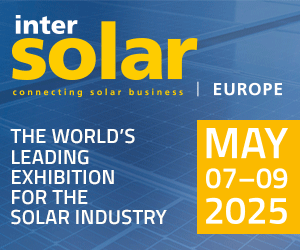Friday’s presents an unprecedented test for Europe’s electricity system. The potential loss of 35,000MW of energy generating capacity will be caused by the moon covering about 85 per cent of the sun from the centre of the viewing zone.
David Hunter, Energy Analyst at Schneider Electric comments;
“European grids have been working hard to ensure the eclipse does not lead to outages. By simulating a progressive reduction in solar generation at the time the eclipse rolls across Europe, grids can avoid that ‘sudden drop off’ that could trigger outages.
“The challenges presented by the solar eclipse are a window to the future. Grids already have to cope with constant variability with wind and solar changes. However, as the proportion of renewables increases within the energy mix, the impact of weather changes will be more complex to manage.
“There are a number of responses to this future energy challenge that are underway. Greater interconnection of European markets will help to smooth localised fluctuations in supply. While anticipated surges in demand can be handled by utilities working in co-operation with consumers to be more energy efficient, along with producers factoring in the charging or retraction of energy from storage technologies. Short-term grid balancing, combined with flexible responses from both industrial and domestic consumers will help, all facilitated by smart, connected technology.”
Scott Henneberry, Strategy & Innovation VP, Smart Grid Strategy at Schneider Electric comments:
“Even though the sun will be out of sight during the solar eclipse, it will not be out of the smart grid’s mind. The solar eclipse is just one example of how the intermittency of renewables can quickly change the dynamics (and therefore the stability) of the grid. And, why it is imperative that the transition to a connected, intelligent and responsive grid takes place.
“Today, with the percentage of total generation by renewables less than 15 per cent in most regions, this intermittency issue is manageable by grid operators. Yet, there is a global effort to increase renewables within the energy mix. Solar represents around three per cent of the UK’s electricity. However, if we fast forward to 2020 and the UK installs ten million homes with solar panels as expected, we will be looking at solar accounting for six per cent of energy generated, with the EU goal of 20% by 2020. This will be very challenging to manage. It is widely believed that new energy storage technologies applied to the grid will be a key success factor.
“The increase in renewables also means that energy can travel in many ways across the grid, instead of the one-way power flows from generation to consumption that existed prior to the incorporation of renewables. These complex multi-directional power flows cannot be managed without smart grid solutions. In a smart grid scenario, sensors can indicate which surges and losses may be dangerous or even uneconomic and determine and automate the best response. This means power can be rerouted to households and businesses in a matter of seconds, or perhaps even milliseconds, whilst safety is maintained. It is this ability of the smart grid to react quickly and intelligently that enables blackouts to be avoided and ensures continuity and availability of low cost energy to consumers.”
Share your industry press now!
Are you a PR agency or sustainability-focused organization? Join the World of Renewables network FREE today and gain exclusive access to our platform to promote your business, share the latest industry news, and connect with a global audience of 700,000+ renewable energy professionals.
Register Now to start posting your updates and showcase your expertise to a highly engaged, environmentally-conscious community.
Find out more about our Content Partnership Programs.*2024 AWARD WINNER* Websites & Mobile Sites, Webby Winner, Peoples Voice 2024










